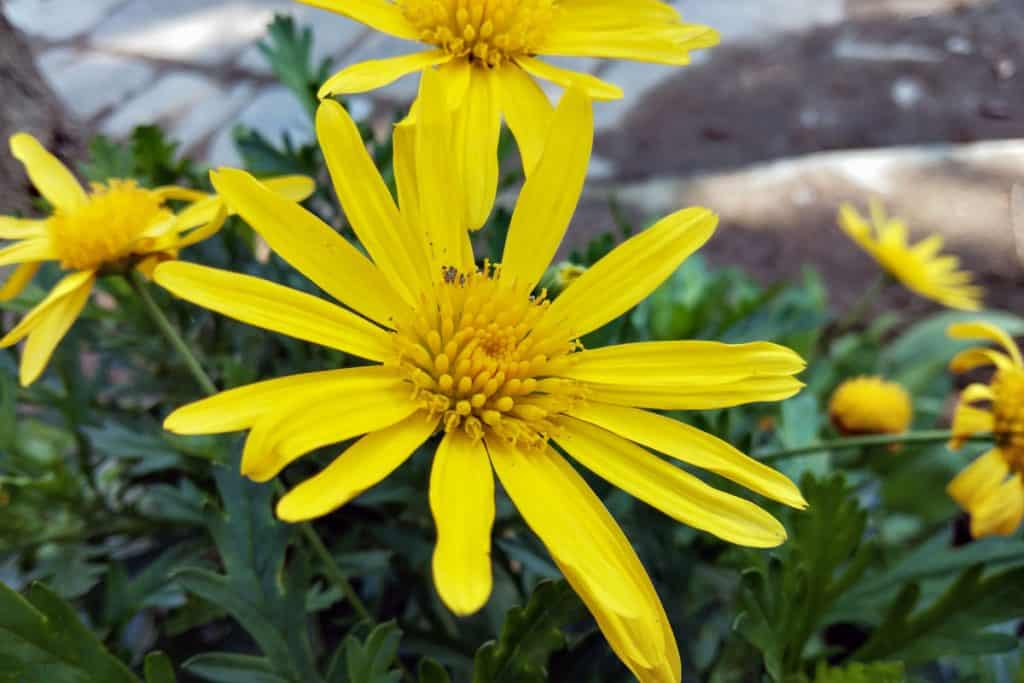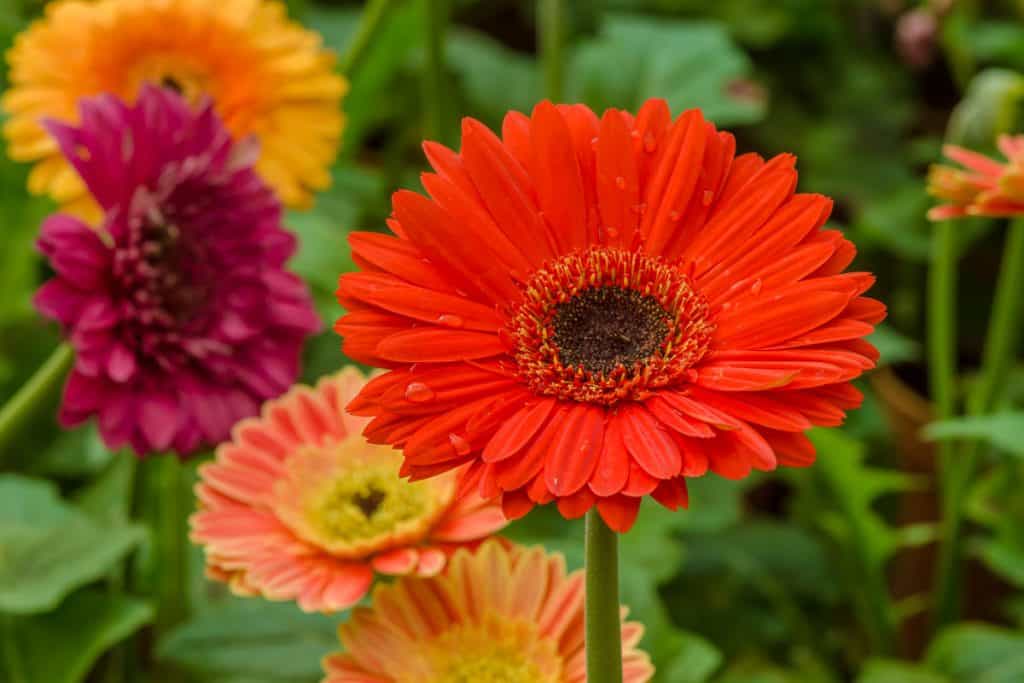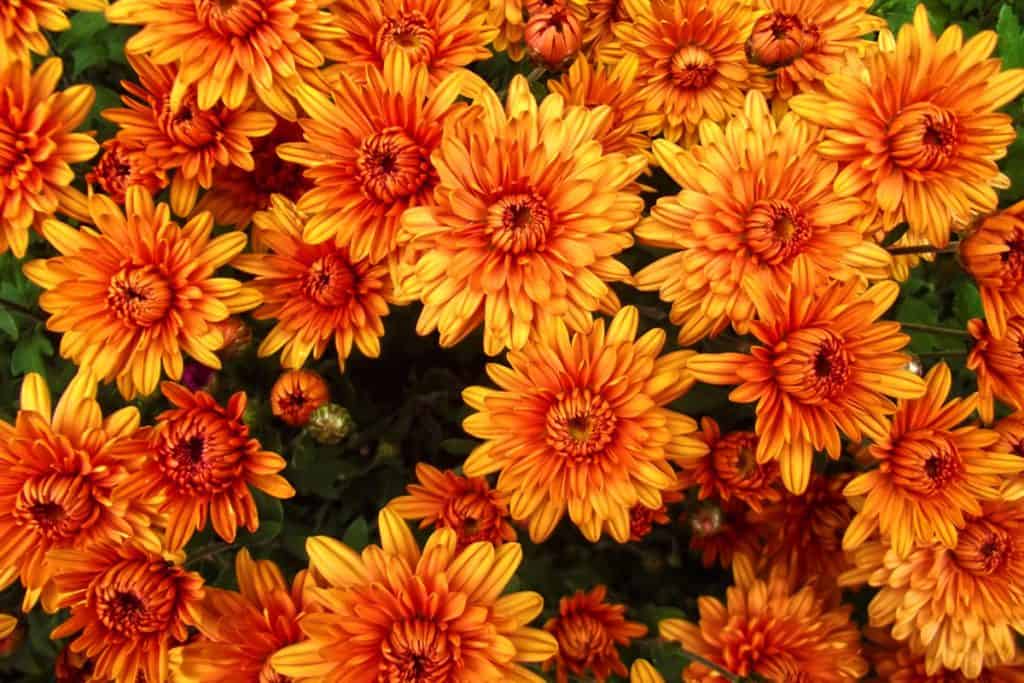![A field of Coneflowers at full bloom , Flowers That Look Like Sunflowers [8 Types With Pictures]](https://gardentabs.com/wp-content/uploads/2020/06/Flowers-That-Look-Like-Sunflowers-8-Types-With-Pictures-683x1024.jpg) With nearly 70 species of herbaceous sunflowers, is seems the options are unlimited for choosing which is the best variety for your home or backyard. Sunflowers, typically annual plants, are grown not only for their radiant beauty but also for their functionality as an edible plant. Incredibly hardy, sunflowers are easy to maintain and grow quickly, proving lovely results.
With nearly 70 species of herbaceous sunflowers, is seems the options are unlimited for choosing which is the best variety for your home or backyard. Sunflowers, typically annual plants, are grown not only for their radiant beauty but also for their functionality as an edible plant. Incredibly hardy, sunflowers are easy to maintain and grow quickly, proving lovely results.
Sunflower varieties can grow between 3-feet and 18-feet tall, with flower heads measuring between 2-inches and 6-inches wide in diameter. Colors range from hues of yellow, orange, and red to bi-color and burgundy. You can find the perfect sunflower, either potted or planted, for your home and backyard.
If you want to add a brilliant burst of sunshine to your home or backyard without planting sunflowers, it might surprise you to learn that there are several look-a-like flowers to choose from. Many look-a-likes are related to sunflowers, as members of the Asteraceae or daisy family. Check out our list of flowers that look like sunflowers to pick radiant, easy-to-grow options for your home and backyard.
1. Coneflowers
Cheerful coneflowers or echinacea are perennial plants that are native to North America. The common name is derived from the spiny, cone-like center of the bloom. Robust stems grow quickly to heights of 2 to 4 feet and produce dainty flowers of purple, white, yellow, orange, pink, and red.

Growing Tips:
- Full sun.
- Loamy soil.
- Drought tolerant.
- USDA Plant Hardiness Zones 3 - 9.
Seeds found at the center of coneflowers attract butterflies, bees, and birds to the yard. Prickly stems deter deer from munching on these hardy flowers.
2. Black-Eyed Susans
Black-eyed Susans or rudbeckia hirta, are best known for their distinguishing, dark brown center. Growing as tall as 3-feet, black-eyed Susans have stout stems, bright green leaves, and yellow-orange blooms. This perennial flower blooms from July through October.
Growing Tips:
- Full to partial sun.
- Loamy, fertilized soil.
- Water frequently.
- USDA Hardiness Zones 3 - 9.
A true wildflower, black-eyed Susans can overtake nearby flowers. You might want to divide them every 3 to 4 years to prevent excessive spreading. Black-eyed Susans attract butterflies, bees, and insects to your yard.
3. Bush Daises
Dark green, bush-like foliage beneath brilliant, yellow blossoms makes the bush daisy or euryops pectinatus quite eye-catching. A perennial plant, the bush daisy can grow between 3 to 8 feet tall.

Growing Tips:
- Full sun.
- Loamy soil.
- Water frequently.
- USDA Plant Hardiness Zones 8 - 11.
Bush daisies grow well as potted plants and can make a lovely addition to a porch or patio. Stimulate flowering by providing ample water.
4. Tickseed
Tickseed or coreopsis is a North American native perennial. Growing between 2 to 4 feet tall, tickseed is an excellent choice for bordering gardens and walkways. A member of the daisy (Asteraceae) family, brightly colored blooms have broad, toothed petals, either yellow or bi-color, yellow-red.
Growing Tips:
- Full sun.
- Loamy soil.
- Water frequently.
- USDA Plant Hardiness Zones 4 - 7.
Also referred to as “pot of gold,” flourishing tickseed flowers will attract butterflies to your yard. The common name refers to the tick-shaped seed of this wildflower.
5. Gerbera Daisy
Gerbera daisies or gerbera jamesonii add a healthy burst of color to any yard. At the base, gerbera daisies have lush, dark green foliage (12-inches wide) with fuzzy leaves. Stout stems between 6-inches to 1-1/2 feet tall produce 3-inch blooms of yellow, orange, pink, red, white, purple, salmon, and bi-colored.

Growing Tips:
- Full sun.
- Loamy, fertilized soil.
- Water frequently.
- USDA Plant Hardiness Zones 8 - 11.
Snip spent flowers to encourage flowering, especially during the cooler, autumn season when gerbera daisy blooms thrive.
6. Echinacea Angustifolia
A member of the daisy (Asteraceae) family, Echinacea Angustifolia, is commonly referred to as “coneflower” because of the cone-like center. Dainty blooms sway atop the hearty stem of Echinacea Angustifolia, which can grow to heights of 2 to 4 feet tall. Colorful varieties of purple, red, pink, white, yellow, and orange give a meadow-like feel to your yard.
Growing Tips:
- Full sun.
- Loamy soil.
- Drought tolerant.
- USDA Plant Hardiness Zones 3 - 9.
Echinacea Angustifolia generates seeds at the conical center that will help to attract butterflies, bees, and birds to your yard. It is a no-fuss, easily grown flower, with a spiny stem that is resistant to deer.
7. Chrysanthemums
Chrysanthemum or c. indicum is closely related to the sunflower, both members of the Asteraceae family, which includes over 30,000 flower species. Commonly referred to as “mum,” these brightly colored flowers envoke images of Autumn. When planted during spring, the perennial mum will return each year, growing 1 to 3 feet tall and blooming beautifully in red, yellow, orange, pink, white, or purple.

Growing Tips:
- Full to partial sun.
- Loamy, fertilized soil.
- Water frequently.
- USDA Plant Hardiness Zones 4 - 9.
Mums’ pom-pom-like blooms are popular for corsages and bouquets. Interestingly, each bloom is comprised of hundreds of individual flowers called florets.
8. False Sunflowers
The false sunflower or heliopsis helianthoides is a perennial plant native to central, North America. A stiff stem with toothed leaves grows between 3 to 4 feet tall to produce a radiant, yellow-orange bloom. False sunflowers go by several other names; smooth oxeye, rough oxeye, and early sunflower.
Growing Tips:
- Full sun to partial shade.
- Loamy to dry soil.
- Drought tolerant.
- USDA Plant Hardiness Zones 3 - 9.
False sunflowers bloom for 2-months, beginning in July, and you can extend flowering by snipping off spent flowers. Nectar and seeds from false sunflowers attract butterflies, bees, and birds to your yard.
Now that you know about several sunflower look-a-likes, you can pick a colorful choice for your home or backyard. To keep your gardens in full bloom throughout the summer season, check out our blogs:
